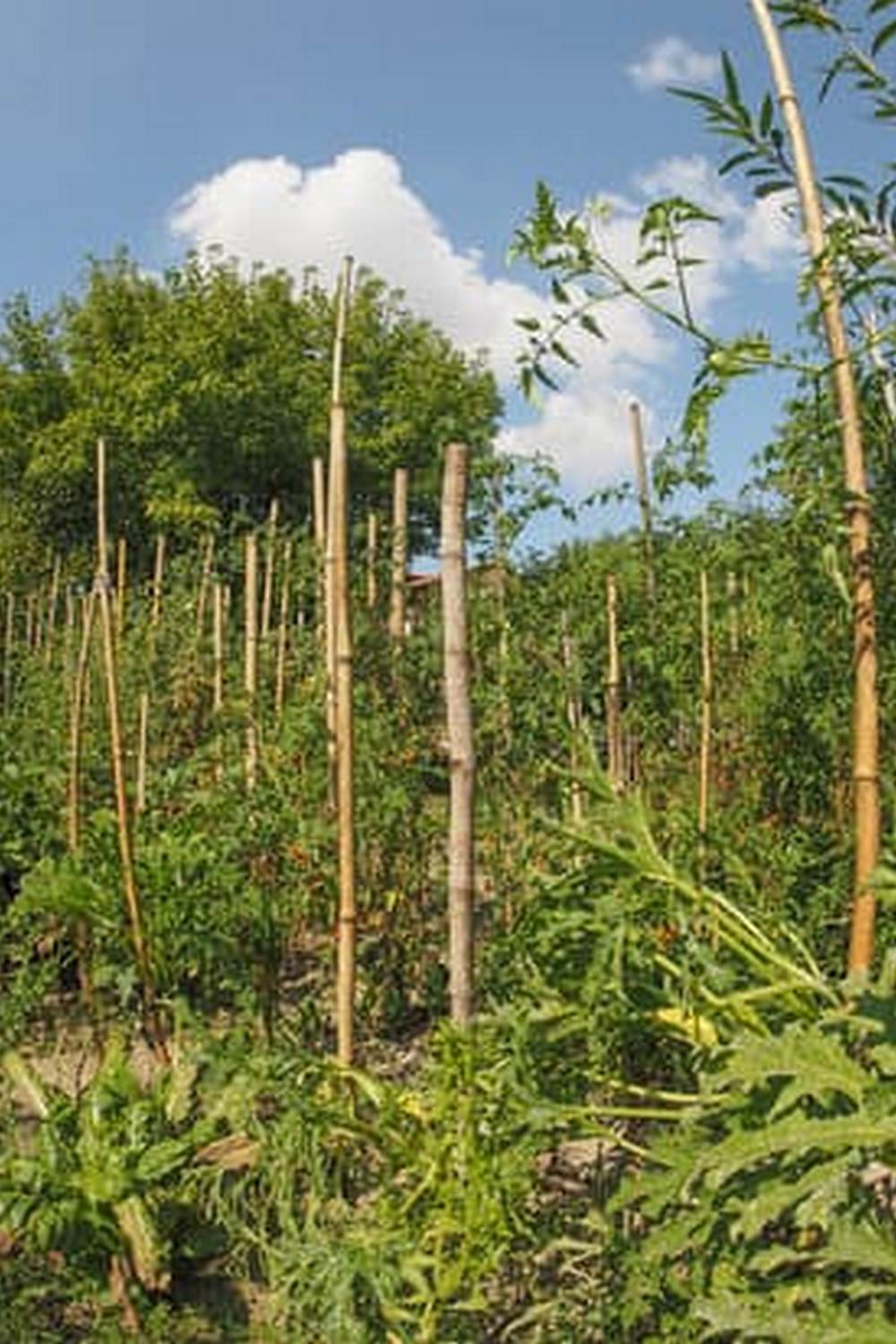Fall vegetable gardening in Virginia is a fantastic way to extend your gardening season and enjoy fresh produce well into the fall months. Whether you are a seasoned gardener or a beginner, fall gardening offers unique opportunities and challenges that can result in a bountiful harvest. With the right planning and preparation, you can reap the rewards of your labor well into the cooler months.
Virginia’s diverse climate allows for a wide variety of vegetables to thrive during the fall season. From leafy greens to root vegetables, there is no shortage of options for what you can grow in your fall garden. By understanding the benefits of fall vegetable gardening in Virginia, you can make the most of this time of year and enjoy the abundance of fresh, homegrown produce.
In this article, we will explore the benefits of fall vegetable gardening in Virginia, discuss the best vegetables to plant during this season, provide tips on preparing your garden for fall planting, offer advice on maintaining your garden throughout the season, address common pests and diseases that may affect your plants, and share information on harvesting and preserving your fall bounty. Let’s delve into the world of fall vegetable gardening in Virginia and embrace all its beauty and bounty.
Benefits of Fall Vegetable Gardening in Virginia
Fall vegetable gardening in Virginia offers a wide array of benefits for both gardeners and the environment. As the temperatures cool down, planting fall vegetables can extend your harvest season and provide fresh produce well into the autumn months. Here are some key advantages of fall vegetable gardening in Virginia:
- Extended Harvest: By planting in the fall, you can enjoy a longer harvest season compared to just growing vegetables in the spring and summer.
- Cooler Weather: Fall temperatures are generally milder than the scorching heat of summer, creating ideal conditions for many cool-season crops to thrive.
- Fewer Pests and Diseases: Some pests and diseases that plague gardens during the warmer months may be less prevalent in the fall, reducing the need for chemical interventions.
Additionally, fall vegetable gardening can also benefit the soil in your garden by promoting biodiversity and reducing erosion. The cooler temperatures help plants establish strong root systems before winter sets in, leading to healthier plants overall. Not to mention, cultivating a fall vegetable garden allows you to continue practicing sustainable gardening practices throughout the year.
- Another advantage of planting a fall vegetable garden is the opportunity to grow unique varieties that thrive in cooler weather. Vegetables such as Brussels sprouts, kale, carrots, and radishes tend to taste sweeter after being exposed to frost, enhancing their flavor profile.
- Furthermore, fall vegetable gardening provides an excellent way to diversify your diet with fresh, nutrient-rich produce even as colder weather approaches. Adding seasonal vegetables to your meals can boost nutritional intake and support overall health during the changing seasons.
Whether you are a seasoned gardener or new to this practice, embracing fall vegetable gardening in Virginia can be a rewarding experience with numerous benefits for you and your local ecosystem. With careful planning and proper care, you can enjoy a bountiful harvest of delicious vegetables while contributing to a more sustainable lifestyle.
Best Vegetables to Plant in Virginia During the Fall
Virginia’s climate provides a unique opportunity for growing a variety of vegetables even during the fall season. When it comes to fall vegetable gardening in Virginia, there are several options that thrive in the cooler temperatures and shorter daylight hours. Some of the best vegetables to plant during this season include kale, spinach, carrots, beets, broccoli, Brussels sprouts, lettuce, and radishes.
Kale is a powerhouse leafy green that becomes sweeter after a frost, making it an excellent choice for fall planting in Virginia. Spinach is another cold-hardy crop that can withstand chilly temperatures and is packed with nutrients. Carrots and beets do well when sown in late summer for harvesting throughout the fall months. Broccoli and Brussels sprouts require a longer growing period but can still be planted in late summer for a late fall harvest.
To prepare your garden for planting these fall vegetables in Virginia, make sure to clear out any remnants of summer crops and amend the soil with compost or organic matter to provide essential nutrients. It is also important to ensure proper spacing between plants to allow for adequate air circulation and prevent overcrowding which can lead to disease. By following these steps, you can set your fall vegetable garden up for success and enjoy a bountiful harvest throughout the season.
| Vegetable | Best Time to Plant |
|---|---|
| Kale | Late summer |
| Spinach | Late summer |
| Carrots | Late summer |
| Beets | Late summer |
How to Prepare Your Garden for Fall Planting in Virginia
Fall vegetable gardening in Virginia requires careful preparation to ensure a successful harvest. One crucial step in preparing your garden for fall planting is to clean up any remnants of summer crops, remove weeds, and clear out any debris that may attract pests or diseases.
This will help create a clean slate for your fall vegetables to thrive. Additionally, it’s essential to replenish the soil with organic matter such as compost or aged manure to provide necessary nutrients for the new plants.
Another important aspect of preparing your garden for fall planting in Virginia is to consider the specific needs of the vegetables you plan to grow. Some cool-season crops like carrots, lettuce, and kale prefer well-drained soil with consistent moisture, while others like broccoli and Brussels sprouts benefit from a slightly alkaline soil pH. Conducting a soil test can help you determine the current nutrient levels in your garden and adjust accordingly.
Proper spacing is key when preparing your garden for fall planting in Virginia as well. Make sure to follow spacing recommendations provided on seed packets or plant labels to allow room for growth and adequate airflow between plants. Crowding can lead to poor air circulation, which may increase the risk of disease. By taking these steps to prepare your garden, you can set yourself up for a successful fall vegetable gardening season in Virginia.
| Benefit | Information |
|---|---|
| Healthy Soil | Replenishing soil with organic matter provides necessary nutrients |
| Crop Specifics | Consider the needs of specific vegetables when preparing the garden |
| Proper Spacing | Follow spacing recommendations for optimal growth and disease prevention |
Tips for Maintaining Your Fall Vegetable Garden in Virginia
Fall vegetable gardening in Virginia can be a rewarding experience, but it requires consistent maintenance to ensure a successful harvest. Here are some essential tips to help you maintain your fall vegetable garden in the beautiful state of Virginia:
Watering
Proper watering is crucial for the health and growth of your fall vegetables. In Virginia, where temperatures can fluctuate during the fall season, it’s important to monitor soil moisture levels regularly. Water your garden deeply and infrequently to encourage strong root development. Be mindful of rain patterns and adjust your watering schedule accordingly.
Weeding
Weeds can compete with your fall vegetables for nutrients and water, so it’s essential to keep them in check. Regularly walk through your garden beds and remove any weeds by hand or using appropriate tools. Mulching can also help suppress weed growth while retaining soil moisture.
Fertilizing
To support the growth of your fall vegetables, consider fertilizing them with a balanced fertilizer rich in nitrogen, phosphorus, and potassium. Be sure to follow the recommended dosage on the fertilizer package to avoid over-fertilization, which can harm your plants. Organic options like compost or manure can also provide essential nutrients for healthier plants.
By following these maintenance tips for your fall vegetable garden in Virginia, you’ll help ensure a bountiful harvest of fresh produce to enjoy throughout the season. Remember that consistency is key when it comes to maintaining a thriving garden, so stay proactive and attentive to the needs of your plants as they grow and develop amidst the beauty of autumn in Virginia.
Dealing With Common Pests and Diseases in Fall Vegetable Gardens in Virginia
When embarking on fall vegetable gardening in Virginia, it’s essential to be prepared for potential pests and diseases that may affect your crops. Some common pests to watch out for in Virginia during the fall season include aphids, cabbage worms, squash bugs, and caterpillars. These creatures can quickly infest your plants and cause damage if not properly managed.
To tackle these pests in your fall vegetable garden, consider using organic methods such as introducing beneficial insects like ladybugs or lacewings, applying neem oil or insecticidal soap, or creating physical barriers like floating row covers. Additionally, practicing crop rotation and interplanting can help disrupt pest reproduction cycles and reduce their impact on your garden.
In terms of diseases, some prevalent issues in fall vegetable gardens in Virginia are powdery mildew, blight, and root rot. To prevent these diseases from taking hold of your plants, make sure to provide adequate air circulation by spacing out your crops properly and avoiding overhead watering.
Consider planting disease-resistant varieties whenever possible and promptly remove any infected plants to prevent the spread of disease throughout your garden. By staying vigilant and taking proactive measures against pests and diseases, you can enjoy a bountiful harvest from your fall vegetable garden in Virginia.
Harvesting and Preserving Your Fall Vegetable Garden in Virginia
Harvesting Your Fall Vegetables
As the temperatures start to drop and the leaves begin to change, it’s time to start harvesting your fall vegetable garden in Virginia. One of the benefits of fall gardening is that many vegetables actually taste sweeter after being exposed to cooler temperatures. When harvesting your crops, make sure to use clean, sharp tools to avoid damaging the plants. Different vegetables have different harvesting times, so be sure to research each specific crop for the best time to pick.
One important aspect of harvesting your fall vegetables is knowing when they are at their peak ripeness. For example, winter squash should be harvested once the skin hardens and can’t be punctured with a fingernail, while leafy greens like kale and spinach should be picked when they are still tender and not overly tough. By paying attention to these details, you can ensure that you are enjoying your homegrown produce at its absolute best.
Preserving Your Fall Bounty
Once you’ve harvested your fall vegetables in Virginia, you may find yourself with more produce than you can enjoy fresh. In order to prolong the life of your harvest and enjoy your homegrown veggies even during the winter months, it’s important to preserve them through various methods. Canning, freezing, pickling, and dehydrating are all great ways to extend the shelf life of your fall bounty.
Canning is a popular method for preserving vegetables like tomatoes, beans, and peppers for long-term storage. Freezing is another convenient option for preserving vegetables such as broccoli, corn, and peas. Pickling can add a tangy twist to cucumbers or beets from your fall garden.
Lastly, dehydrating is perfect for removing moisture from herbs or hot peppers for long-lasting use. With proper preservation techniques in place, you can continue enjoying the fruits of your labor well beyond the harvesting season.
Fall Vegetable Gardening Events and Workshops in Virginia
Some popular fall vegetable gardening events and workshops in Virginia include:
- Virginia Cooperative Extension Master Gardener Program: This program offers a variety of workshops and classes focused on all aspects of gardening, including fall vegetable gardening. Participants have the chance to interact with Master Gardeners who provide valuable insights and advice.
- Fall Gardening Symposiums: Many botanical gardens and horticultural societies in Virginia host symposiums dedicated to fall gardening. These events feature expert speakers, hands-on demonstrations, and plant sales, making them a great place to gain inspiration and practical tips for your fall vegetable garden.
- Local Farmers Markets: While not traditional workshops, farmers markets can also be a great place to learn about fall vegetable gardening in Virginia. You can speak directly with local growers, ask questions about specific crops, and even purchase fresh produce to inspire your own garden planning.
By attending these fall vegetable gardening events and workshops in Virginia, you can stay informed about the latest trends in horticulture, connect with like-minded individuals, and gain the confidence needed to create a successful fall vegetable garden. Don’t miss out on these opportunities to expand your knowledge and take your gardening skills to the next level.
Conclusion
In conclusion, fall vegetable gardening in Virginia offers a plethora of benefits and rewards for those who embrace it. Not only does it allow for an extended growing season and fresh produce well into the cooler months, but it also provides a sense of connection to the land and a feeling of accomplishment as you nurture your garden from seed to harvest.
By taking advantage of the optimal planting window during the fall in Virginia, gardeners can enjoy a bountiful harvest while also contributing to sustainable practices and self-sufficiency.
As you prepare your garden for fall planting in Virginia, keep in mind the best vegetables to plant during this season, such as kale, broccoli, and carrots. Proper soil preparation and maintenance are crucial for a successful fall vegetable garden, so be sure to amend your soil with organic matter and provide adequate water and nutrients. Implementing companion planting techniques and practicing crop rotation can help deter pests and promote healthy growth.
Despite potential challenges like pests and diseases that may arise in fall vegetable gardens in Virginia, being proactive with preventive measures such as regular inspections and natural remedies can help safeguard your crops. Harvesting and preserving your fall bounty is a gratifying experience that allows you to enjoy the fruits of your labor throughout the winter months.
Consider attending fall vegetable gardening events or workshops in Virginia to expand your knowledge and network with other passionate gardeners. Embracing the beauty and bounty of fall vegetable gardening in Virginia not only benefits your health and well-being but also contributes to the local food system and environmental sustainability.
Frequently Asked Questions
When Should I Start a Fall Garden in Virginia?
In Virginia, the best time to start a fall garden is typically in late summer or early fall. However, it’s essential to consider the specific planting dates for different crops based on their individual requirements and preferences for cooler weather.
When Should I Start My Fall Vegetable Garden?
Starting your fall vegetable garden depends on various factors such as the average first frost date in your area and the specific vegetables you plan to grow. Generally, sowing seeds or transplanting seedlings around late summer to early fall will give them enough time to mature before winter sets in.
What Can You Plant in September in VA?
September in Virginia offers an excellent opportunity to plant a variety of vegetables and herbs that thrive in cooler temperatures. Crops such as broccoli, cabbage, kale, spinach, lettuce, radishes, carrots, and garlic can be planted during this time for a bountiful autumn harvest. Remember to check the ideal planting dates for each crop to ensure successful growth in your region.

If you’re looking to get into vegetable gardening, or are just looking for some tips on how to make your current garden better, then you’ve come to the right place! My name is Ethel and I have been gardening for years. In this blog, I’m going to share with you some of my best tips on how to create a successful vegetable garden.





